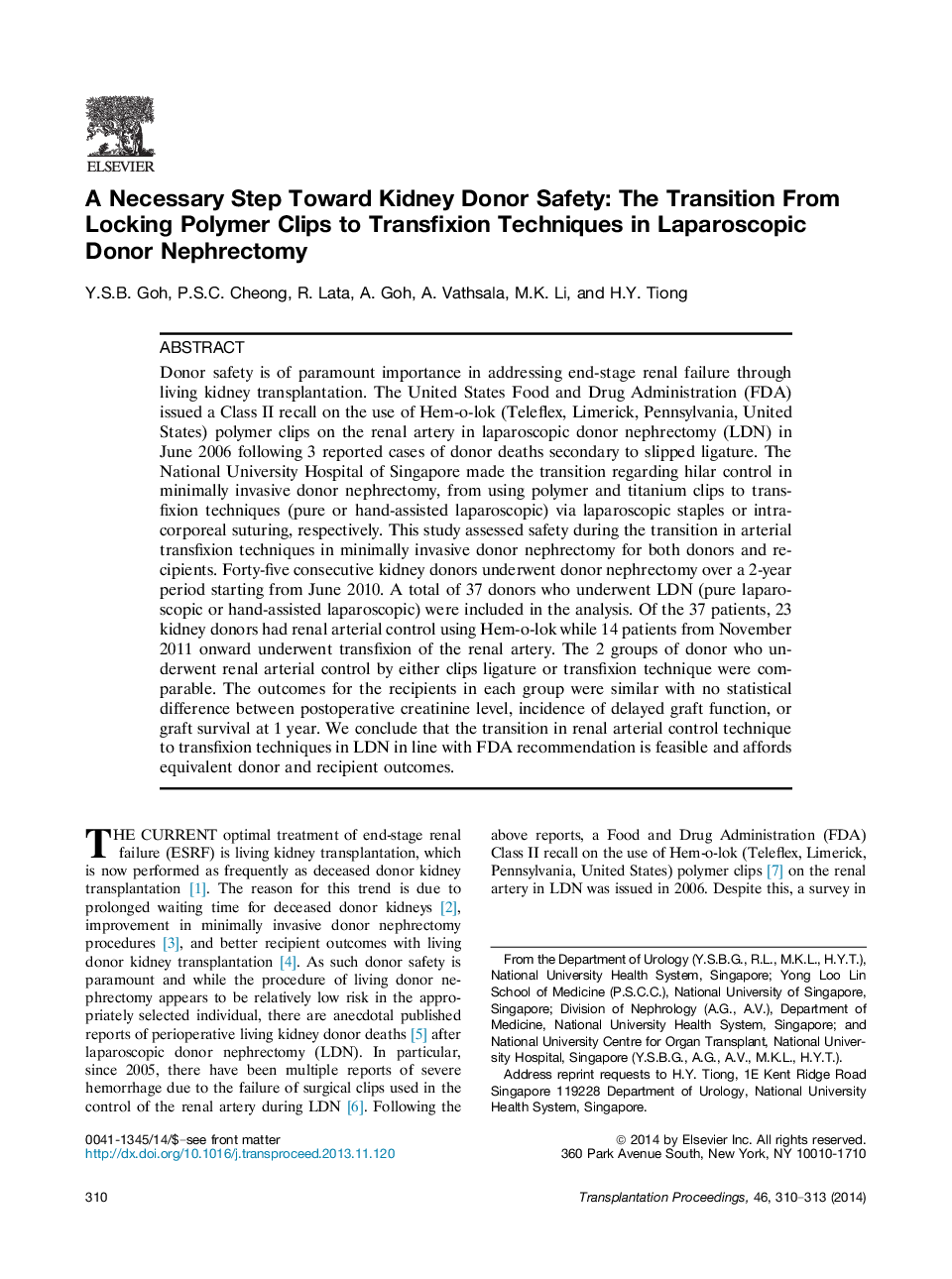| Article ID | Journal | Published Year | Pages | File Type |
|---|---|---|---|---|
| 4258721 | Transplantation Proceedings | 2014 | 4 Pages |
Donor safety is of paramount importance in addressing end-stage renal failure through living kidney transplantation. The United States Food and Drug Administration (FDA) issued a Class II recall on the use of Hem-o-lok (Teleflex, Limerick, Pennsylvania, United States) polymer clips on the renal artery in laparoscopic donor nephrectomy (LDN) in June 2006 following 3 reported cases of donor deaths secondary to slipped ligature. The National University Hospital of Singapore made the transition regarding hilar control in minimally invasive donor nephrectomy, from using polymer and titanium clips to transfixion techniques (pure or hand-assisted laparoscopic) via laparoscopic staples or intracorporeal suturing, respectively. This study assessed safety during the transition in arterial transfixion techniques in minimally invasive donor nephrectomy for both donors and recipients. Forty-five consecutive kidney donors underwent donor nephrectomy over a 2-year period starting from June 2010. A total of 37 donors who underwent LDN (pure laparoscopic or hand-assisted laparoscopic) were included in the analysis. Of the 37 patients, 23 kidney donors had renal arterial control using Hem-o-lok while 14 patients from November 2011 onward underwent transfixion of the renal artery. The 2 groups of donor who underwent renal arterial control by either clips ligature or transfixion technique were comparable. The outcomes for the recipients in each group were similar with no statistical difference between postoperative creatinine level, incidence of delayed graft function, or graft survival at 1 year. We conclude that the transition in renal arterial control technique to transfixion techniques in LDN in line with FDA recommendation is feasible and affords equivalent donor and recipient outcomes.
